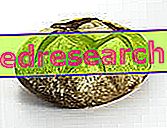
The taste of foods depends above all on their heritage of molecules and chemical compounds. The most characteristic example is given by the sweet taste of sugar, which from the chemical point of view is more correctly known as sucrose. This compound derives from the union of a glucose molecule with a fructose molecule; the latter is sweeter than sugar and abounds in ripe fruit, which gives it its typical sweet taste. Discrete amounts of fructose are also contained in the peppers and onions which, look at random, are among the few vegetables to have a sweet taste. Meat, on the other hand, is free of sugars (both simple and complex), although small traces of glycogen (a complex sugar) are present in horse meat, to which they give a sweetish aftertaste. As for fishery products, a certain amount of simple carbohydrates is present in shellfish.
If then, continuing to talk about sugar, we heat the sucrose up to a certain temperature this will strongly change its flavor until it takes on the typical caramel flavor. Cooking, in fact, is able to strongly change the taste of raw foods, as new chemicals are developed due to the effect of heat. Moreover, even the same chewing is able to release some substances present in food; it is well known, for example, that a piece of bread chewed for a long time becomes particularly sweet, thanks to the enzyme salivary ptyalin which splits the starch into glucose.
Turning to spices, the spicy "flavor" of the chili pepper is given by capsaicin and other capsaicinoids, while pepper owes much of its piperine spiciness. In garlic we have allicin, while in ginger we find the zingerone. In cloves and cinnamon the aroma is given by eugenol, while in the vinegar the sour taste is given above all by acetic acid.
The cooling effect of some chewingum is linked to the presence of xylitol, a polyol present in some fruits, such as strawberries and plums; the same goes for menthol, extracted from the essential oil of peppermint but often produced synthetically. The sour taste of an unripe apple is given by the abundant presence of malic and tartaric acid, while in citrus fruits we find mainly citric acid.
It should also be noted that, with rare exceptions, there are no foods made up of single chemical compounds in their pure state and it is precisely the association of different compounds that gives each food different sensory nuances. To give an idea it is enough to compare a vanilla bean with its essence (vanillin); although the latter is the main molecule responsible for the flavor and aroma of vanilla, the organoleptic characteristics cannot be exactly superimposed.
The appearance, texture and smell of a food also influence the perception of taste. From a psychological point of view, for example, it has been shown that tasting a pink vanilla yogurt gives the impression of perceiving the taste of strawberries, although the product is completely lacking. This happens because the shape and color of a food predisposes the brain to expect a precise range of flavors.
The same discourse, done for sight, also applies to the sense of smell; just think of how flat the taste of food becomes when we are cooled.
As for the consistency, the oral mucosa is rich in nerve endings capable of detecting tactile sensations, linked to the consistency, graininess and viscosity of the food. The spicy flavor of the chili pepper, for example, is not due to the interaction with specific taste receptors, but due to the stimulatory effect of capsaicin on receptors that receive thermal lesions from abrasion or heat. In unripe fruit and aged red wine, on the other hand, it is the abundant presence of tannins that "give" the typical sensation of being pressed: these molecules, in fact, reduce the lubricating capacity of the saliva, making the mouth rough, dry and mixed.



